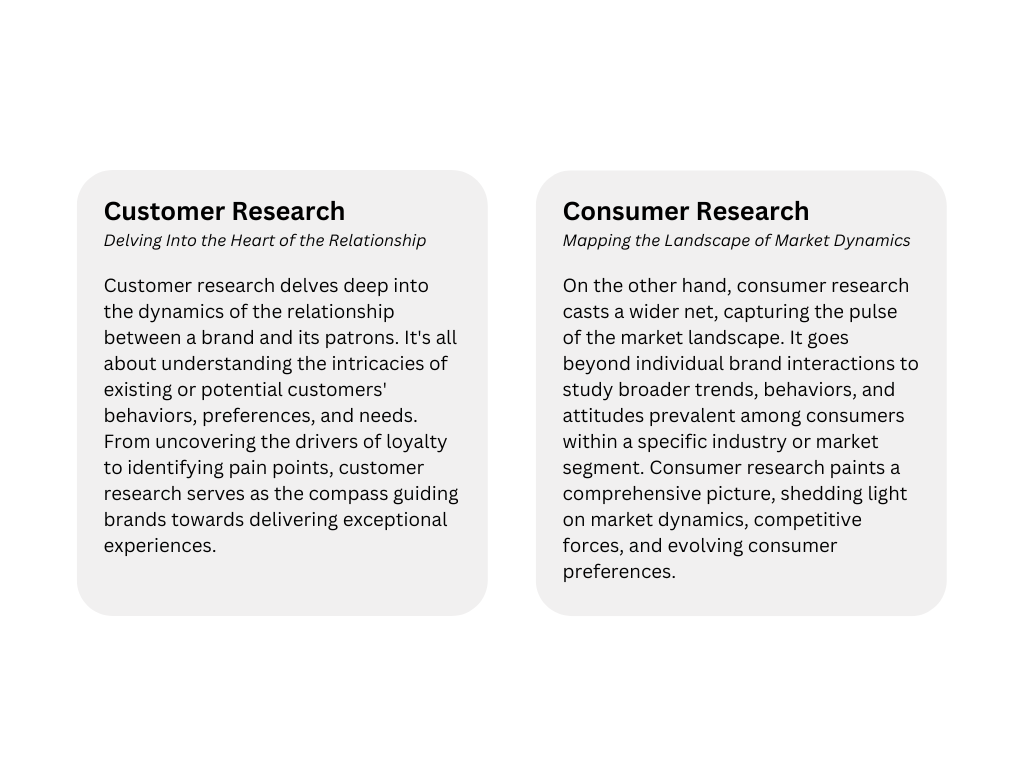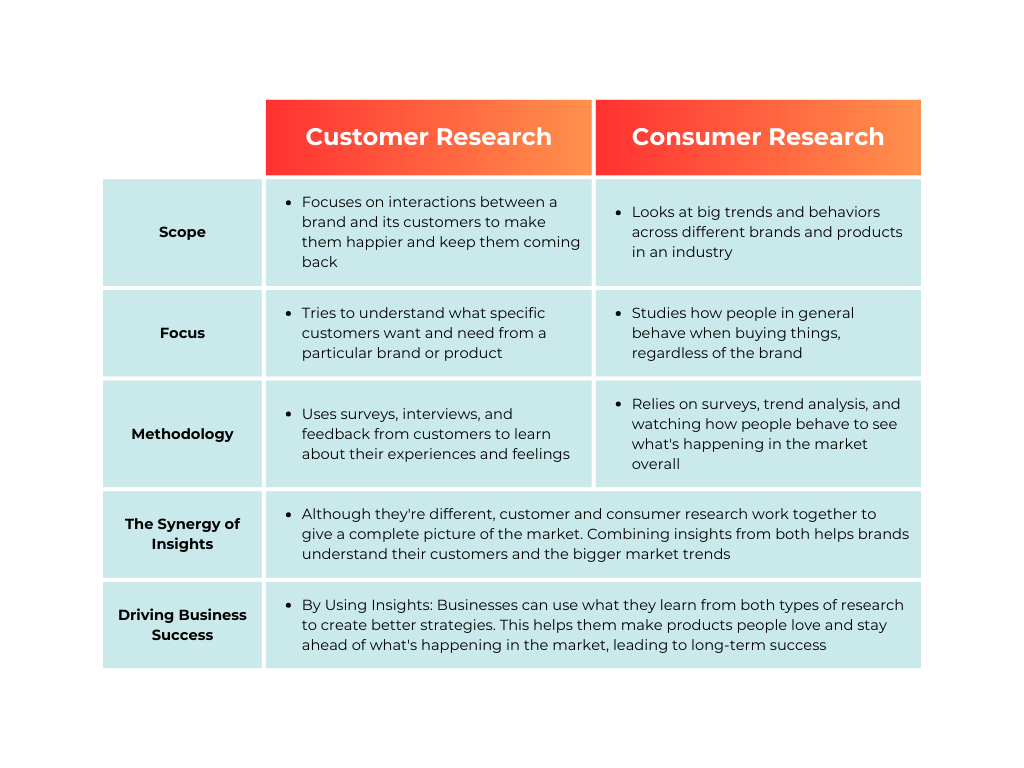Introduction:
In the world of market research, there are two big things we look at: customer research and consumer research. Even though people often mix them up, they’re actually different but related. Customer research looks closely at how people feel about a specific brand or product. It checks out things like what they like, how satisfied they are, and how they interact with the brand. On the other hand, consumer research looks at the bigger picture. It studies trends and behaviors across all brands and products in a market. It’s like zooming out to see what’s happening across the entire landscape. Even though they focus on different things, both types of research are super important. They give us insights that help businesses make smart decisions. So, let’s explore the differences between customer research and consumer research and see how they work together to shape successful business strategies in a constantly changing market.
The Key Differences:
Customer research and consumer research both aim to help businesses make better decisions, but they have different focuses and methods. Customer research looks closely at how people interact with a specific brand or product. It tries to understand what customers like, what they don’t like, and what keeps them coming back. On the other hand, consumer research looks at the bigger picture of the entire market. It examines trends and behaviors among people who buy similar products, regardless of the brand. By using surveys, analyzing data, and studying how people behave, consumer research gives businesses a broad view of what’s happening in the market. While customer research zooms in on individual interactions, consumer research steps back to see the whole picture, helping businesses make smart decisions about their products and strategies.
Let’s compare the two:
Conclusion:
In the dynamic landscape of market research, customer research and consumer research play pivotal roles in guiding businesses towards informed decision-making and strategic innovation. By understanding the nuances of these two disciplines and harnessing their synergies, brands can unlock a deeper understanding of their customers, their competitors, and the market at large, paving the way for unparalleled success in an ever-evolving landscape.



